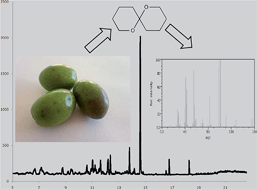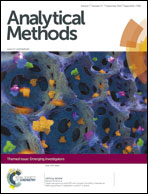Green detection of the olive fruit fly pest by the direct determination of its sexual pheromone
Abstract
Bactrocera oleae Gmelin, the olive fruit fly, is considered a serious pest in the cultivation of olive trees since the larvae feed on the fruit damaging the productivity and quality of the final products (olive fruit and olive oil). An extensive application of pesticides is usually employed to fight this pest producing secondary side-effects of environmental and safety concern. In this context, the development of green analytical methods focused on the detection of the pest may reduce these secondary problems. In this article, the combination of headspace and gas chromatography with mass spectrometric detection is proposed for the identification of the olive fruit fly pest using one of its sexual pheromone components (1,7-dioxaspiro-[5,5]-undecane) as a marker. The developed method is characterized by its simplicity, automation and robustness and follows the principles of green analytical chemistry. It provides, working under its optimal operation conditions, a limit of detection of 26.55 μ kg−1 and precision, expressed as a relative standard deviation, better than 4.7% (calculated at 100 μg kg−1). The relative recovery values (calculated at 100 μg kg−1 and 500 μg kg−1) ranged between 93% and 98% for different olive cultivars which testifies to the applicability of the proposed method.

- This article is part of the themed collection: Emerging Investigators

 Please wait while we load your content...
Please wait while we load your content...